Environmental-Friendly Bio-technologies for Sustainable Agrowaste Management Ibrahim Che








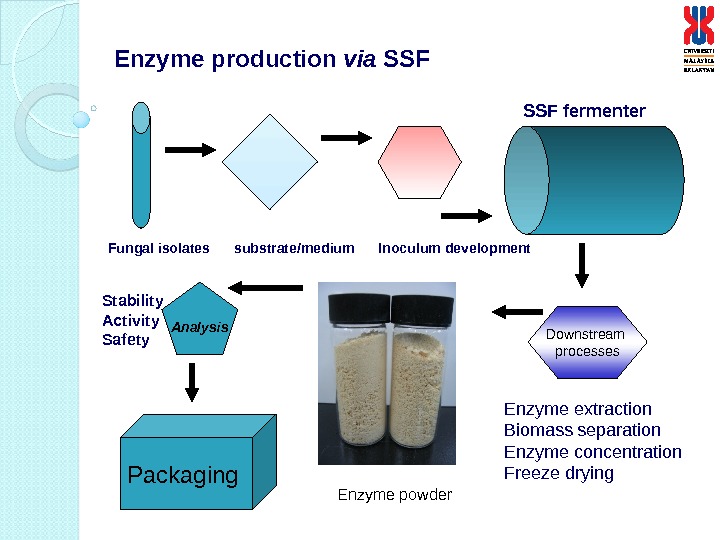







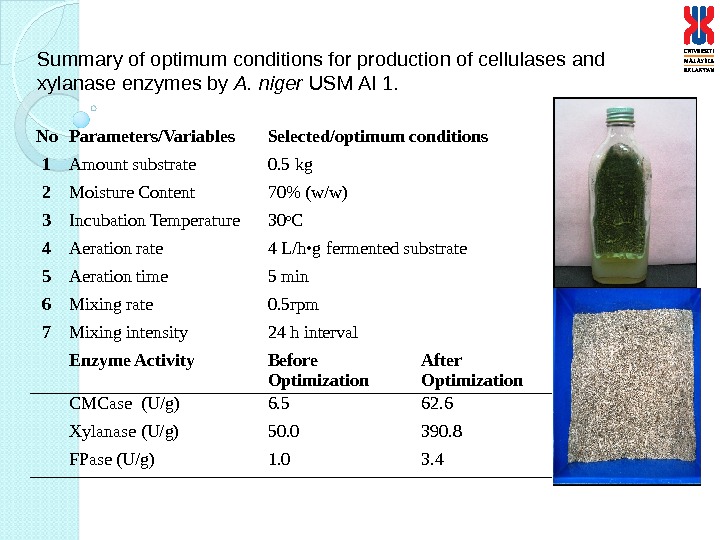




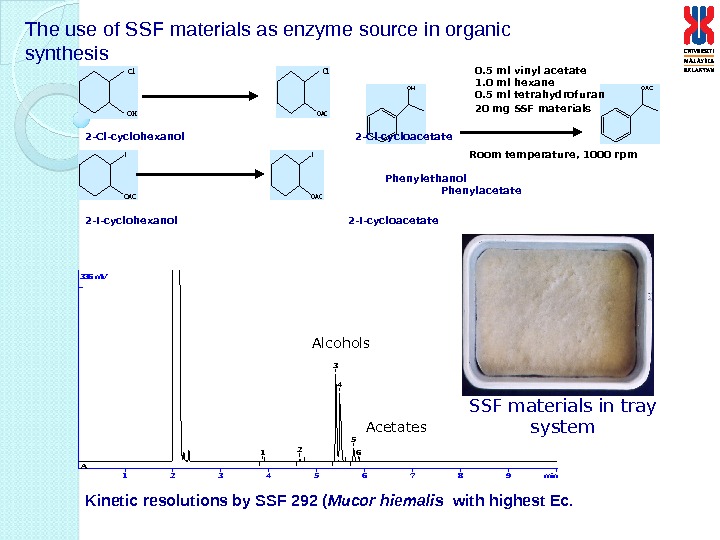





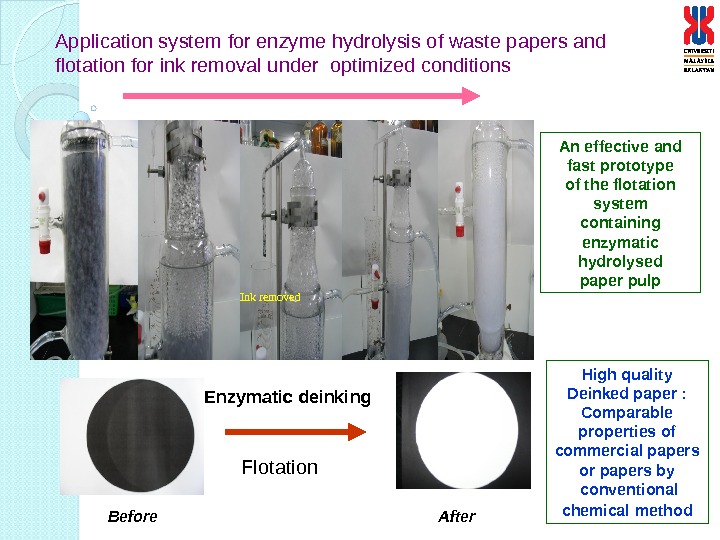

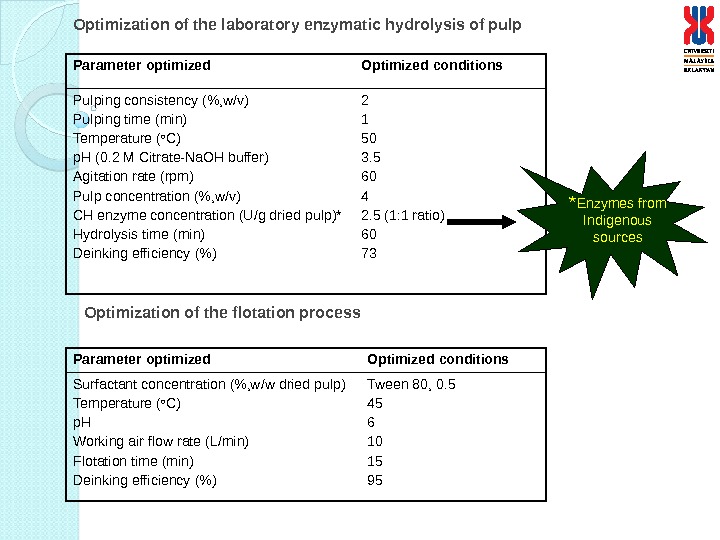

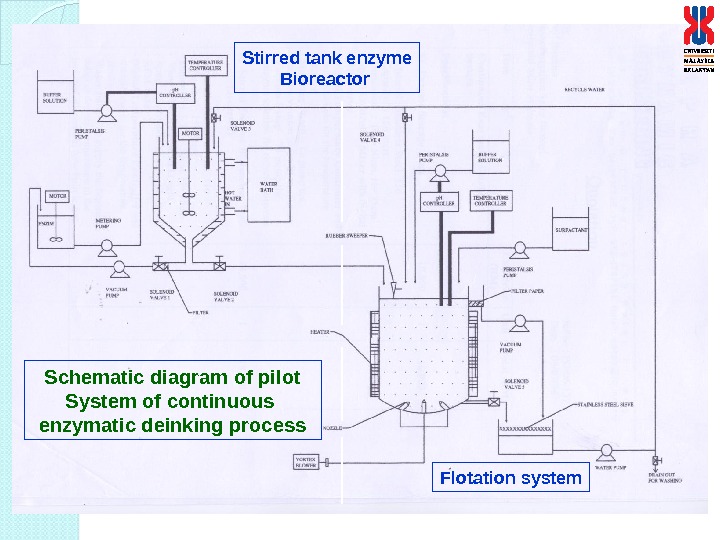

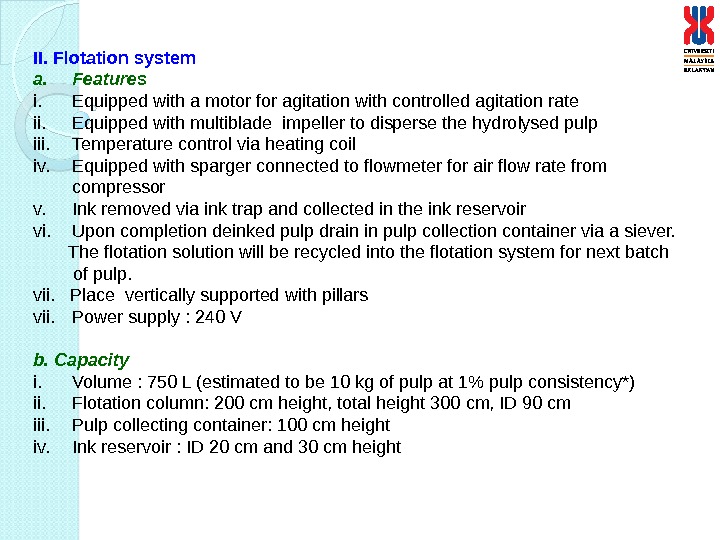




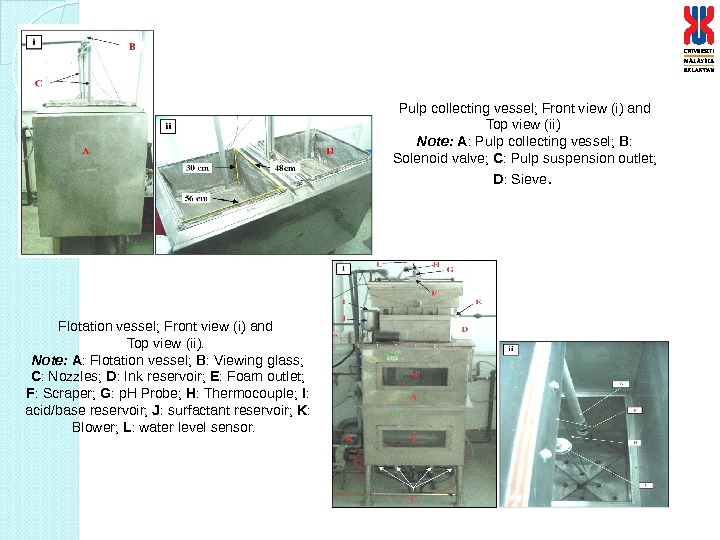















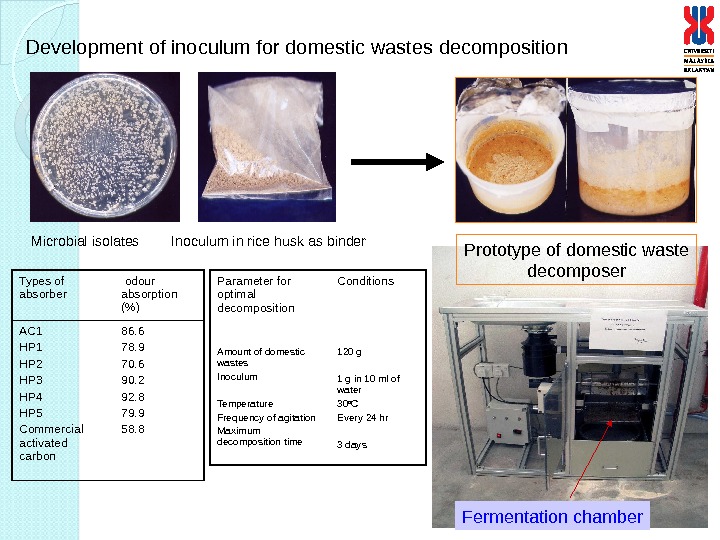



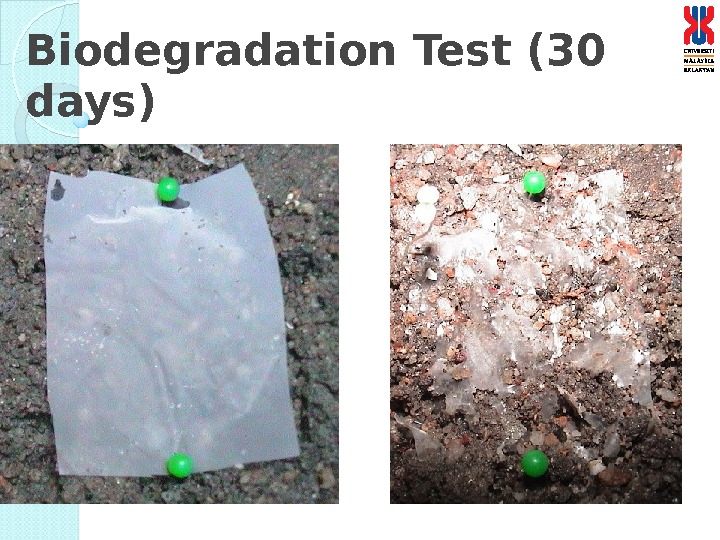





research.ppt
- Размер: 23 Mегабайта
- Количество слайдов: 63
Описание презентации Environmental-Friendly Bio-technologies for Sustainable Agrowaste Management Ibrahim Che по слайдам
 Environmental-Friendly Bio-technologies for Sustainable Agrowaste Management Ibrahim Che Omar, DEng
Environmental-Friendly Bio-technologies for Sustainable Agrowaste Management Ibrahim Che Omar, DEng
 Agricultural wastes – global problem Environmental impact Recycling of wastes Disadvantages (cost intensive, unsafe, requires treatment, high energy requirement, environmental unfriendly) Physical, Chemical, Biological methods Value added for Economic development 3 R concept is a m ust. Concept of sustainable development Why biological methods? • Cheap, safe and effective • Utilization of agrowastes for the production of added value and commercial products • Viable large scale operation of enzymatic hydrolysis with low production cost • Environmental friendly system/process • Reproducible, efficient, low operational cost, non-detrimental approach & good quality products • Strategic management of agricultural solid wastes
Agricultural wastes – global problem Environmental impact Recycling of wastes Disadvantages (cost intensive, unsafe, requires treatment, high energy requirement, environmental unfriendly) Physical, Chemical, Biological methods Value added for Economic development 3 R concept is a m ust. Concept of sustainable development Why biological methods? • Cheap, safe and effective • Utilization of agrowastes for the production of added value and commercial products • Viable large scale operation of enzymatic hydrolysis with low production cost • Environmental friendly system/process • Reproducible, efficient, low operational cost, non-detrimental approach & good quality products • Strategic management of agricultural solid wastes
 Dried palm kernel cake Empty fruit bunches Sugarcane bagasse. Oil palm shells Oil palm fresh fruit fibers Paddy straws Some of the lignocellulosic materials from Malaysian agrowastes Malaysian golden crop
Dried palm kernel cake Empty fruit bunches Sugarcane bagasse. Oil palm shells Oil palm fresh fruit fibers Paddy straws Some of the lignocellulosic materials from Malaysian agrowastes Malaysian golden crop
 Sustainable development of natural resources – generation of agrowastes with a volume of >100 million tons a year Environmental impact Commercializable and high value products/processes in recycling of waste materials via biotechnological approach Solid State Fermentation (SSF) Potential fungal isolates Enzymes , organic acid, biopesticides, compost, mushroom, animal feed, fertilizers. Why SSF? • Simple • Cost effective • Environmental friendly • High product concentration • Ease in product purification • Less contamination risk • Applicable for production of various microbial products SCB PKC RH RW
Sustainable development of natural resources – generation of agrowastes with a volume of >100 million tons a year Environmental impact Commercializable and high value products/processes in recycling of waste materials via biotechnological approach Solid State Fermentation (SSF) Potential fungal isolates Enzymes , organic acid, biopesticides, compost, mushroom, animal feed, fertilizers. Why SSF? • Simple • Cost effective • Environmental friendly • High product concentration • Ease in product purification • Less contamination risk • Applicable for production of various microbial products SCB PKC RH RW
 Potential microorganisms with good growth on agrowastes
Potential microorganisms with good growth on agrowastes
 The utilization of agrowastes as substrates for SSF Medium formulation and fermentation conditions Enzyme preparations Cellulase USM I Xylanase USM IISolid state fermentation (SSF) for the production of microbial metabolites
The utilization of agrowastes as substrates for SSF Medium formulation and fermentation conditions Enzyme preparations Cellulase USM I Xylanase USM IISolid state fermentation (SSF) for the production of microbial metabolites
 AGRICULTURAL WASTES BIOMANAGEMENT Animal feed formulation Fermentable sugars Yeast biomass Poultry Aquaculture industries Composting, biofertilizers, antibiosis Enzymes, Flavouring compounds Plants/Agriculture Yeast extract Nitrogenous compounds/SSF SSF/semi solid fermentation Chemicals SSF/enzymatic/physical Submerged fermentation SSF Applications in food and chemical industries Bioplastics. Submerged fermentation UTILIZATION OF MALAYSIAN AGRICULTURAL WASTES Bioremediation. SS
AGRICULTURAL WASTES BIOMANAGEMENT Animal feed formulation Fermentable sugars Yeast biomass Poultry Aquaculture industries Composting, biofertilizers, antibiosis Enzymes, Flavouring compounds Plants/Agriculture Yeast extract Nitrogenous compounds/SSF SSF/semi solid fermentation Chemicals SSF/enzymatic/physical Submerged fermentation SSF Applications in food and chemical industries Bioplastics. Submerged fermentation UTILIZATION OF MALAYSIAN AGRICULTURAL WASTES Bioremediation. SS
 Enzyme production via SSF Downstream processes. Analysis Packaging SSF fermenter Fungal isolates substrate/medium Inoculum development Enzyme extraction Biomass separation Enzyme concentration Freeze drying. Stability Activity Safety Enzyme powder
Enzyme production via SSF Downstream processes. Analysis Packaging SSF fermenter Fungal isolates substrate/medium Inoculum development Enzyme extraction Biomass separation Enzyme concentration Freeze drying. Stability Activity Safety Enzyme powder
 Lipase production by Mucor miehei by solid state fermentation After optimization : 27 U/g/day Before optimization : 10 U/g/day Growth of M. meihei in flask system
Lipase production by Mucor miehei by solid state fermentation After optimization : 27 U/g/day Before optimization : 10 U/g/day Growth of M. meihei in flask system
 PRODUCTION OF ENZYMES AND ITS INDUSTRIAL APPLICATIONS • Lipase (Fine chemical synthesis and detergency) • Protease (Allergenic protein degradation in latex and feeds and detergency) • Xylanase/hemicellulase (Enzymatic deinking in paper recyling, production of fermentable sugars) • Cellulase (Similar to xylanase) • Lignin peroxidase (Lignin degradation, dye decolorisation) • Manganese peroxidase (Similar to LP) • Laccase (Similar to LP dan Mn. P) • Manannase (Degradation of mannan in palm kernel cake) • Phytase (Feed formulation) • -glucosidase (Feed formulation and fermentable sugar production)
PRODUCTION OF ENZYMES AND ITS INDUSTRIAL APPLICATIONS • Lipase (Fine chemical synthesis and detergency) • Protease (Allergenic protein degradation in latex and feeds and detergency) • Xylanase/hemicellulase (Enzymatic deinking in paper recyling, production of fermentable sugars) • Cellulase (Similar to xylanase) • Lignin peroxidase (Lignin degradation, dye decolorisation) • Manganese peroxidase (Similar to LP) • Laccase (Similar to LP dan Mn. P) • Manannase (Degradation of mannan in palm kernel cake) • Phytase (Feed formulation) • -glucosidase (Feed formulation and fermentable sugar production)
 Plate 1: FERMSOSTAT with complete fermentation system. A B C DE F G H I J K CL NO P Q M RL PS TU Figure 1: Schematic diagram of FERMSOSTAT with complete fermentation system. A B C DE F I JL N Q O H C K M GP PS R TSCALING UP OF SOLID STATE FERMENTATION — FERMSOSTAT®
Plate 1: FERMSOSTAT with complete fermentation system. A B C DE F G H I J K CL NO P Q M RL PS TU Figure 1: Schematic diagram of FERMSOSTAT with complete fermentation system. A B C DE F I JL N Q O H C K M GP PS R TSCALING UP OF SOLID STATE FERMENTATION — FERMSOSTAT®
 Substrate port (A) and Sampling port (B) provided in FERMSOSTAT®.
Substrate port (A) and Sampling port (B) provided in FERMSOSTAT®.
 Mixing system provided in FERMSOSTAT®. (X) Speed control motor, (Y) Various digital readouts and (Z) Impeller. D E FCY H G IZ ABX
Mixing system provided in FERMSOSTAT®. (X) Speed control motor, (Y) Various digital readouts and (Z) Impeller. D E FCY H G IZ ABX
 Xylanase production in the FERMSOSTAT
Xylanase production in the FERMSOSTAT
 Figure 3. 25: Production of FPase enzyme by A. niger USM AI 1 and T. reesei under optimized fermentation conditions. Figure 3. 23: Production of CMCase enzyme by A. niger USM AI 1 and T. reesei under optimized fermentation conditions. . Figure 3. 24: Production of xylanase enzyme by A. niger USM AI 1 and T. reesei under optimized fermentation conditions. Note: The SSF process was carried out under the indicated fungi; 0. 5 kg substrate; 7 0 % (w/w) moisture content; 30 o C; aeration at 4 L/h. g fermented substrate for 5 min and mixing at 0. 5 rpm for 5 min. Arrow bars indicate means with standard error of three replicates. Enzymes production in the FERMSOSTAT®
Figure 3. 25: Production of FPase enzyme by A. niger USM AI 1 and T. reesei under optimized fermentation conditions. Figure 3. 23: Production of CMCase enzyme by A. niger USM AI 1 and T. reesei under optimized fermentation conditions. . Figure 3. 24: Production of xylanase enzyme by A. niger USM AI 1 and T. reesei under optimized fermentation conditions. Note: The SSF process was carried out under the indicated fungi; 0. 5 kg substrate; 7 0 % (w/w) moisture content; 30 o C; aeration at 4 L/h. g fermented substrate for 5 min and mixing at 0. 5 rpm for 5 min. Arrow bars indicate means with standard error of three replicates. Enzymes production in the FERMSOSTAT®
 Summary of optimum conditions for production of cellulases and xylanase enzymes by A. niger USM AI 1. No Parameters/Variables Selected/optimum conditions 1 Amount substrate 0. 5 kg 2 Moisture Content 70% (w/w) 3 Incubation Temperature 30 o C 4 Aeration rate 4 L/h • g fermented substrate 5 Aeration time 5 min 6 Mixing rate 0. 5 rpm 7 Mixing intensity 24 h interval Enzyme Activity Before Optimization After Optimization CMCase (U/g) 6. 5 62. 6 Xylanase (U/g) 50. 0 390. 8 FPase (U/g) 1. 0 3.
Summary of optimum conditions for production of cellulases and xylanase enzymes by A. niger USM AI 1. No Parameters/Variables Selected/optimum conditions 1 Amount substrate 0. 5 kg 2 Moisture Content 70% (w/w) 3 Incubation Temperature 30 o C 4 Aeration rate 4 L/h • g fermented substrate 5 Aeration time 5 min 6 Mixing rate 0. 5 rpm 7 Mixing intensity 24 h interval Enzyme Activity Before Optimization After Optimization CMCase (U/g) 6. 5 62. 6 Xylanase (U/g) 50. 0 390. 8 FPase (U/g) 1. 0 3.
 Profiles of batch production of enzymes using the FERMSOSTAT®
Profiles of batch production of enzymes using the FERMSOSTAT®
 SSF INTELLIGENT FERMENTER Water/inoculum storage Control panel Tray system
SSF INTELLIGENT FERMENTER Water/inoculum storage Control panel Tray system
 Optimization of enzymes production via solid state fermentation using PKC Xylanase production by Aspergillus niger USM AI 1 Cellulase production by by Aspergillus niger var. awamori USM B 1 Amount of PKC 10 g/tray Ambient temperature Water content : 1 : 0. 75 Inoculum size : 1 X 10 44 spores/ml Moistening agent : tap water Xylose as inducer at 0. 75% Cultivation time : 7 days Production : 33 U/g PKC Amount of PKC 10 g/tray Ambient temperature Water content : 1 : 0. 75 Inoculum size : 1 X 10 55 spores/ml Moistening agent : tap water Cellulase as inducer at 0. 75% Cultivation time : 7 days Production : 10 U/g PKC Lipase production by Mucor hiemalis NRRL 13009 Amount of PKC 10 g/tray Ambient temperature Water content : 120% p. H : 9. 0 Inducer : olive oil 2% Sucrose 0. 3% Ammonium sulphate 0. 4% Cultivation time : 3 days Production: 81 U/g PK
Optimization of enzymes production via solid state fermentation using PKC Xylanase production by Aspergillus niger USM AI 1 Cellulase production by by Aspergillus niger var. awamori USM B 1 Amount of PKC 10 g/tray Ambient temperature Water content : 1 : 0. 75 Inoculum size : 1 X 10 44 spores/ml Moistening agent : tap water Xylose as inducer at 0. 75% Cultivation time : 7 days Production : 33 U/g PKC Amount of PKC 10 g/tray Ambient temperature Water content : 1 : 0. 75 Inoculum size : 1 X 10 55 spores/ml Moistening agent : tap water Cellulase as inducer at 0. 75% Cultivation time : 7 days Production : 10 U/g PKC Lipase production by Mucor hiemalis NRRL 13009 Amount of PKC 10 g/tray Ambient temperature Water content : 120% p. H : 9. 0 Inducer : olive oil 2% Sucrose 0. 3% Ammonium sulphate 0. 4% Cultivation time : 3 days Production: 81 U/g PK
 Application of lipase for esterification reaction of acetone glycerol acyl esters 1, 2 — O -isopropylidene glycerol + fatty acids 1, 2 — O -isopropylidene acyl glycerol + water Mild hydrolysis monoacylglycerol + acetone. Lipase of Pseudomonas sp. a. Celite 545, b. Florisil, c. Kieselguhr, d. Amberlite XAD-4, e. Amberlite XAD-7, f. Eupergite C, and g. Eupergite C 250 L. Hexane Log P: 3. 5 Fatty acid specificity CONTINUOUS PACKED BIOREACTOR SYSTEM (Each cycle was for the reaction time of 24 hr )Lauryl esters
Application of lipase for esterification reaction of acetone glycerol acyl esters 1, 2 — O -isopropylidene glycerol + fatty acids 1, 2 — O -isopropylidene acyl glycerol + water Mild hydrolysis monoacylglycerol + acetone. Lipase of Pseudomonas sp. a. Celite 545, b. Florisil, c. Kieselguhr, d. Amberlite XAD-4, e. Amberlite XAD-7, f. Eupergite C, and g. Eupergite C 250 L. Hexane Log P: 3. 5 Fatty acid specificity CONTINUOUS PACKED BIOREACTOR SYSTEM (Each cycle was for the reaction time of 24 hr )Lauryl esters
 The use of SSF materials as enzyme source in organic synthesis O H O A C 123456789 min 336 m. V A 12 3 4 5 6 OH Cl OAC Cl I OAC 0. 5 ml vinyl acetate 1. 0 ml hexane 0. 5 ml tetrahydrofuran 20 mg SSF materials Room temperature, 1000 rpm Phenylethanol Phenylacetate 2 -Cl-cyclohexanol 2 -Cl-cycloacetate 2 -I-cyclohexanol 2 -I-cycloacetate Kinetic resolutions by SSF 292 ( Mucor hiemalis with highest Ec. Alcohols Acetates SSF materials in tray system
The use of SSF materials as enzyme source in organic synthesis O H O A C 123456789 min 336 m. V A 12 3 4 5 6 OH Cl OAC Cl I OAC 0. 5 ml vinyl acetate 1. 0 ml hexane 0. 5 ml tetrahydrofuran 20 mg SSF materials Room temperature, 1000 rpm Phenylethanol Phenylacetate 2 -Cl-cyclohexanol 2 -Cl-cycloacetate 2 -I-cyclohexanol 2 -I-cycloacetate Kinetic resolutions by SSF 292 ( Mucor hiemalis with highest Ec. Alcohols Acetates SSF materials in tray system
 Comparison on the use of SSF materials from different sources of lipase source in organic synthesis Strain Substrate Moisture content (%)(%) Inducer Lipase activity (U/g) Rxn time (hr) CC bb (%)(%) ( R )-Ia eeee bb (%) (S)-2 a eeee bb (%) EE cc Mucor hiemalis NRRL 13. 009 Palm kernel cake (PKC) 5050 — 4545 120120 1212 8787 99 1616 M. hiemalis NRRL 13. 009 PKCPKC 5050 Olive oil 1717 120120 77 99 55 2020 M. hiemalis NRRL 13. 009 PKCPKC 60 60 — 2626 120120 88 8080 55 1010 M. hiemalis NRRL 13. 009 PKCPKC 6060 Olive oil 2121 120120 88 9292 66 2626 M. hiemalis NRRL 13. 009 Coconut waste 6767 — 88 120120 1212 8585 1010 1414 M. hiemalis NRRL 13. 009 Coconut waste 6767 Olive oil 1717 120120 77 5858 33 44 M. hiemalis NRRL 13. 009 Coconut waste 7575 — 1515 120120 1515 8484 1212 1313 M. hiemalis NRRL 13. 009 Coconut waste 7575 Olive oil
Comparison on the use of SSF materials from different sources of lipase source in organic synthesis Strain Substrate Moisture content (%)(%) Inducer Lipase activity (U/g) Rxn time (hr) CC bb (%)(%) ( R )-Ia eeee bb (%) (S)-2 a eeee bb (%) EE cc Mucor hiemalis NRRL 13. 009 Palm kernel cake (PKC) 5050 — 4545 120120 1212 8787 99 1616 M. hiemalis NRRL 13. 009 PKCPKC 5050 Olive oil 1717 120120 77 99 55 2020 M. hiemalis NRRL 13. 009 PKCPKC 60 60 — 2626 120120 88 8080 55 1010 M. hiemalis NRRL 13. 009 PKCPKC 6060 Olive oil 2121 120120 88 9292 66 2626 M. hiemalis NRRL 13. 009 Coconut waste 6767 — 88 120120 1212 8585 1010 1414 M. hiemalis NRRL 13. 009 Coconut waste 6767 Olive oil 1717 120120 77 5858 33 44 M. hiemalis NRRL 13. 009 Coconut waste 7575 — 1515 120120 1515 8484 1212 1313 M. hiemalis NRRL 13. 009 Coconut waste 7575 Olive oil
 Depletion of forest resources – global problem (Each ton of paper making – 17 – 20 trees, 31, 500 L of water, 41, 000 Kw/h energy, 50 -70 kg chemicals) 27 kg air pollution and creating 2. 5 m 3 landfill materials Environmental impact Recycling of waste paper – conventional chemical methods (sodium hydroxide, sodium silicate, hydrogen peroxide, hypochlorite, chelating agents and surfactants) Environmental impact (cost intensive, unsafe, requires treatment for finished papers, high energy requirement, environmental unfriendly) ENZYME APPLICATION IN PAPER INDUSTRY
Depletion of forest resources – global problem (Each ton of paper making – 17 – 20 trees, 31, 500 L of water, 41, 000 Kw/h energy, 50 -70 kg chemicals) 27 kg air pollution and creating 2. 5 m 3 landfill materials Environmental impact Recycling of waste paper – conventional chemical methods (sodium hydroxide, sodium silicate, hydrogen peroxide, hypochlorite, chelating agents and surfactants) Environmental impact (cost intensive, unsafe, requires treatment for finished papers, high energy requirement, environmental unfriendly) ENZYME APPLICATION IN PAPER INDUSTRY
 PULP AND PAPER INDUSTRIES IN MALAYSIA Demand for paper continues to be strong although in paperless global society (a state of self sufficiency) The industry is heavily dependent on imported fibre, particularly virgin pulp. > 1. 0 million tons per annum (19 paper manufacturing companies) Paper import: 1, 189, 120 metric tonnes per year (RM 2. 7 billion) Thus, a new source of fibre is needed to strengthen the industry Non-wood materials Recycling of waste papers (< 5%) Kenaf fibres (Conventional chemical method) ( Hibiscus cannabinus ) (No biological/enzymatic method)
PULP AND PAPER INDUSTRIES IN MALAYSIA Demand for paper continues to be strong although in paperless global society (a state of self sufficiency) The industry is heavily dependent on imported fibre, particularly virgin pulp. > 1. 0 million tons per annum (19 paper manufacturing companies) Paper import: 1, 189, 120 metric tonnes per year (RM 2. 7 billion) Thus, a new source of fibre is needed to strengthen the industry Non-wood materials Recycling of waste papers (< 5%) Kenaf fibres (Conventional chemical method) ( Hibiscus cannabinus ) (No biological/enzymatic method)
 ISSUES ON ENVIRONMENTAL IMPACTS • Pollutions from conventional chemical methods Environmental friendly, biological methods via biotechnology Alternative biological methods for paper recycling using biocatalysts/enzymes ______________________________ Why biological method for paper recycling? • Cheap, safe and effective • Utilization of agrowastes for the production of added value and commercial products • Viable large scale operation of enzymatic hydrolysis of pulp and ink removal with low production cost • Environmental friendly system/process for deinked waste papers • Reproducible, efficient, low operational cost, non-detrimental approach good quality deinked papers
ISSUES ON ENVIRONMENTAL IMPACTS • Pollutions from conventional chemical methods Environmental friendly, biological methods via biotechnology Alternative biological methods for paper recycling using biocatalysts/enzymes ______________________________ Why biological method for paper recycling? • Cheap, safe and effective • Utilization of agrowastes for the production of added value and commercial products • Viable large scale operation of enzymatic hydrolysis of pulp and ink removal with low production cost • Environmental friendly system/process for deinked waste papers • Reproducible, efficient, low operational cost, non-detrimental approach good quality deinked papers
 SPECIFIC OBJECTIVES ON ENZYMATIC DEINKING SYSTEM ________________________ 1. To design, construct and fabricate the enzymatic bioreactor for paper pulp hydrolysis , flotation system and pulp separation unit for continuous enzymatic deinking, ink removal, ink separation and reuse of enzymes and flotation solution. 2. To evaluate the performance of the enzymatic deinking system under continuous operation based on the quality and properties of the deinked papers.
SPECIFIC OBJECTIVES ON ENZYMATIC DEINKING SYSTEM ________________________ 1. To design, construct and fabricate the enzymatic bioreactor for paper pulp hydrolysis , flotation system and pulp separation unit for continuous enzymatic deinking, ink removal, ink separation and reuse of enzymes and flotation solution. 2. To evaluate the performance of the enzymatic deinking system under continuous operation based on the quality and properties of the deinked papers.
 Application system for enzyme hydrolysis of waste papers and flotation for ink removal under optimized conditions Enzymatic deinking Flotation High quality Deinked paper : Comparable properties of commercial papers or papers by conventional chemical method. An effective and fast prototype of the flotation system containing enzymatic hydrolysed paper pulp Ink removed Before After
Application system for enzyme hydrolysis of waste papers and flotation for ink removal under optimized conditions Enzymatic deinking Flotation High quality Deinked paper : Comparable properties of commercial papers or papers by conventional chemical method. An effective and fast prototype of the flotation system containing enzymatic hydrolysed paper pulp Ink removed Before After
 DEINKING OF PULP – PAPER RECYCLING BEFORE AFTEREnzymatic deinking and flotation process
DEINKING OF PULP – PAPER RECYCLING BEFORE AFTEREnzymatic deinking and flotation process
 Parameter optimized Optimized conditions Pulping consistency (%, w/v) Pulping time (min) Temperature ( o C) p. H (0. 2 M Citrate-Na. OH buffer) Agitation rate (rpm) Pulp concentration (%, w/v) CH enzyme concentration (U/g dried pulp)* Hydrolysis time (min) Deinking efficiency (%) 2 1 50 3. 5 60 4 2. 5 (1: 1 ratio) 60 73 Optimization of the laboratory enzymatic hydrolysis of pulp Parameter optimized Optimized conditions Surfactant concentration (%, w/w dried pulp) Temperature ( o C) p. H Working air flow rate (L/min) Flotation time (min) Deinking efficiency (%) Tween 80, 0. 5 45 6 10 15 95 Optimization of the flotation process * Enzymes from Indigenous sources
Parameter optimized Optimized conditions Pulping consistency (%, w/v) Pulping time (min) Temperature ( o C) p. H (0. 2 M Citrate-Na. OH buffer) Agitation rate (rpm) Pulp concentration (%, w/v) CH enzyme concentration (U/g dried pulp)* Hydrolysis time (min) Deinking efficiency (%) 2 1 50 3. 5 60 4 2. 5 (1: 1 ratio) 60 73 Optimization of the laboratory enzymatic hydrolysis of pulp Parameter optimized Optimized conditions Surfactant concentration (%, w/w dried pulp) Temperature ( o C) p. H Working air flow rate (L/min) Flotation time (min) Deinking efficiency (%) Tween 80, 0. 5 45 6 10 15 95 Optimization of the flotation process * Enzymes from Indigenous sources
 Characteristics Enzymatic deinked paper Control paper Grammage (g/m 2 ) Thickness (mm) Brightness (%) Burst Index (k. Pa m 2 /g) Tensile Index (N m/g) Tear Index (m. N m 2 /g) 61. 19 0. 1400 95 4. 24 26. 6 6. 36 60. 56 0. 1277 99* 4. 44 25. 56 6. 70 Physical characteristics of deinked paper * Bleaching involved in treatment process
Characteristics Enzymatic deinked paper Control paper Grammage (g/m 2 ) Thickness (mm) Brightness (%) Burst Index (k. Pa m 2 /g) Tensile Index (N m/g) Tear Index (m. N m 2 /g) 61. 19 0. 1400 95 4. 24 26. 6 6. 36 60. 56 0. 1277 99* 4. 44 25. 56 6. 70 Physical characteristics of deinked paper * Bleaching involved in treatment process
 Schematic diagram of pilot System of continuous enzymatic deinking process Stirred tank enzyme Bioreactor Flotation system
Schematic diagram of pilot System of continuous enzymatic deinking process Stirred tank enzyme Bioreactor Flotation system
 Details of the continuous enzymatic deinking process I : Enzyme bioreactor a. Features i. The bioreactor is a stirred tank reactor, which will be equipped with impeller for agitation ii. The motor will be used for agitation with controlled agitation rate iii. The impeller will be designed as blades to prevent clumpings of pulp. iv. The temperature of the bioreactor will be controlled by temperature controlled jacket v. Upon completion of reaction, the pulp will be pump into the flotation system while the enzyme solution will be recycled into the bioreactor the next batch of pulp. vi. Equipped with probes for temperature and p. H b. Capacity i. Volume : 150 L (estimated to be 10 kg of pulp at 1% pulp consistency per cycle*) ii. 75 cm (ID) and 120 cm height Pulp consistency can be varied, more pulp at higher consistency and higher agitation rate and enzyme concentration. At 1%, per cycle 30 – 40 min or 36 — 40 cycles per day or 360 – 400 kg pulp deinked per day
Details of the continuous enzymatic deinking process I : Enzyme bioreactor a. Features i. The bioreactor is a stirred tank reactor, which will be equipped with impeller for agitation ii. The motor will be used for agitation with controlled agitation rate iii. The impeller will be designed as blades to prevent clumpings of pulp. iv. The temperature of the bioreactor will be controlled by temperature controlled jacket v. Upon completion of reaction, the pulp will be pump into the flotation system while the enzyme solution will be recycled into the bioreactor the next batch of pulp. vi. Equipped with probes for temperature and p. H b. Capacity i. Volume : 150 L (estimated to be 10 kg of pulp at 1% pulp consistency per cycle*) ii. 75 cm (ID) and 120 cm height Pulp consistency can be varied, more pulp at higher consistency and higher agitation rate and enzyme concentration. At 1%, per cycle 30 – 40 min or 36 — 40 cycles per day or 360 – 400 kg pulp deinked per day
 II. Flotation system a. Features i. Equipped with a motor for agitation with controlled agitation rate ii. Equipped with multiblade impeller to disperse the hydrolysed pulp iii. Temperature control via heating coil iv. Equipped with sparger connected to flowmeter for air flow rate from compressor v. Ink removed via ink trap and collected in the ink reservoir vi. Upon completion deinked pulp drain in pulp collection container via a siever. The flotation solution will be recycled into the flotation system for next batch of pulp. vii. Place vertically supported with pillars vii. Power supply : 240 V b. Capacity i. Volume : 750 L (estimated to be 10 kg of pulp at 1% pulp consistency*) ii. Flotation column: 200 cm height, total height 300 cm, ID 90 cm iii. Pulp collecting container: 100 cm height iv. Ink reservoir : ID 20 cm and 30 cm height
II. Flotation system a. Features i. Equipped with a motor for agitation with controlled agitation rate ii. Equipped with multiblade impeller to disperse the hydrolysed pulp iii. Temperature control via heating coil iv. Equipped with sparger connected to flowmeter for air flow rate from compressor v. Ink removed via ink trap and collected in the ink reservoir vi. Upon completion deinked pulp drain in pulp collection container via a siever. The flotation solution will be recycled into the flotation system for next batch of pulp. vii. Place vertically supported with pillars vii. Power supply : 240 V b. Capacity i. Volume : 750 L (estimated to be 10 kg of pulp at 1% pulp consistency*) ii. Flotation column: 200 cm height, total height 300 cm, ID 90 cm iii. Pulp collecting container: 100 cm height iv. Ink reservoir : ID 20 cm and 30 cm height

 A Unit: cm. Hydrolysis tank Flotation system
A Unit: cm. Hydrolysis tank Flotation system
 S Developed pilot scale of enzymatic deinking system; (A) Front view, (B) Left view and (C) Right view. Notes: K : Vacuum pipe; L : Peristaltic pump; M : Mixer controller box; N : Heater; O : Enzyme storage vessel; P : Enzyme/water recycling pipe; Q : Enzyme/water recycling vessel; R : Drain pipe; S : Water pump; T : Deinked pulp outlet; U: Sieve; V : Ink reservoir; W : Water inlet; X : Flotation vessel; Y : Solenoid valves; Z : Flowmeter.
S Developed pilot scale of enzymatic deinking system; (A) Front view, (B) Left view and (C) Right view. Notes: K : Vacuum pipe; L : Peristaltic pump; M : Mixer controller box; N : Heater; O : Enzyme storage vessel; P : Enzyme/water recycling pipe; Q : Enzyme/water recycling vessel; R : Drain pipe; S : Water pump; T : Deinked pulp outlet; U: Sieve; V : Ink reservoir; W : Water inlet; X : Flotation vessel; Y : Solenoid valves; Z : Flowmeter.
 Enzyme storage vessel; Front view (i) and Top view ii). Bioreactor equipped with mixer; Front view (i) and Top view (ii). Note: A : Enzymatic hydrolysis vessel; B : Mixer controller box; C : Mixer, D : Impeller shaft, E : p. H probe; F : Thermocouple; G : Sieve; H : Impeller tips; I : Pulp slurry outlet.
Enzyme storage vessel; Front view (i) and Top view ii). Bioreactor equipped with mixer; Front view (i) and Top view (ii). Note: A : Enzymatic hydrolysis vessel; B : Mixer controller box; C : Mixer, D : Impeller shaft, E : p. H probe; F : Thermocouple; G : Sieve; H : Impeller tips; I : Pulp slurry outlet.
 Flotation vessel; Front view (i) and Top view (ii). Note: A : Flotation vessel; B : Viewing glass; C : Nozzles; D : Ink reservoir; E : Foam outlet; F : Scraper; G : p. H Probe; H : Thermocouple; I : acid/base reservoir; J : surfactant reservoir; K : Blower; L : water level sensor. Pulp collecting vessel; Front view (i) and Top view (ii) Note: A : Pulp collecting vessel; B : Solenoid valve; C : Pulp suspension outlet; D : Sieve.
Flotation vessel; Front view (i) and Top view (ii). Note: A : Flotation vessel; B : Viewing glass; C : Nozzles; D : Ink reservoir; E : Foam outlet; F : Scraper; G : p. H Probe; H : Thermocouple; I : acid/base reservoir; J : surfactant reservoir; K : Blower; L : water level sensor. Pulp collecting vessel; Front view (i) and Top view (ii) Note: A : Pulp collecting vessel; B : Solenoid valve; C : Pulp suspension outlet; D : Sieve.
 Blower (i), single nozzle (ii) and Nozzles unit (iii) used in the flotation system Foam scraping unit used in flotation process Note: A : Scraper; B : Foam drain; C : Foam/ink particle outlet; D : Water level sensor; E : Water inlet; F : Thermocouple; G : Scraper carrier
Blower (i), single nozzle (ii) and Nozzles unit (iii) used in the flotation system Foam scraping unit used in flotation process Note: A : Scraper; B : Foam drain; C : Foam/ink particle outlet; D : Water level sensor; E : Water inlet; F : Thermocouple; G : Scraper carrier
 : Schematic diagram of diaphragm pump used in the deinking process Note: A : Diaphragm pump; B : Solenoid valve; C : pulp suspension from bioreactor; D: pulp suspension to flotation vessel; E: Blower; F: Nozzles unit. Circulation of water (control temperature) around bioreactor and heater. Note: A: Heater; B: Metering pump; C: Stopper; D: Bioreactor vessel. Heater used in deinking process.
: Schematic diagram of diaphragm pump used in the deinking process Note: A : Diaphragm pump; B : Solenoid valve; C : pulp suspension from bioreactor; D: pulp suspension to flotation vessel; E: Blower; F: Nozzles unit. Circulation of water (control temperature) around bioreactor and heater. Note: A: Heater; B: Metering pump; C: Stopper; D: Bioreactor vessel. Heater used in deinking process.
 Figure 4. 4: Control panel for the operational of enzymatic deinking system. Note: Process sequence (start: i; end: viii) A: Main switch; B: Process sequence switch; C: Timer for pulp hydrolysis; D: Bioreactor temperature; E: Timer for flotation process; F: Timer for surfactant; G: Surfactant; H, K: Acid/base solution; I, P: Water level sensor; J: Diaphragm pump; L: Blower; M: Ink reservoir; N: Mixer; O: Nozzles unit. Bioreactor Enzyme storage vessel DH IEnzyme solution N i ii Flotation vessel FK G P Foam scraper unit vii vi v Pulp collecting vessel. EM Sieveviii Pulp suspension. Water iii Pulp suspension BA C LJ Oiv
Figure 4. 4: Control panel for the operational of enzymatic deinking system. Note: Process sequence (start: i; end: viii) A: Main switch; B: Process sequence switch; C: Timer for pulp hydrolysis; D: Bioreactor temperature; E: Timer for flotation process; F: Timer for surfactant; G: Surfactant; H, K: Acid/base solution; I, P: Water level sensor; J: Diaphragm pump; L: Blower; M: Ink reservoir; N: Mixer; O: Nozzles unit. Bioreactor Enzyme storage vessel DH IEnzyme solution N i ii Flotation vessel FK G P Foam scraper unit vii vi v Pulp collecting vessel. EM Sieveviii Pulp suspension. Water iii Pulp suspension BA C LJ Oiv


 Mixed Office wastes (MOW) Old newspapers (ONP)
Mixed Office wastes (MOW) Old newspapers (ONP)





 MARKET POTENTIAL (SIZE) Global market The application of enzymes in pulp and paper industries large : Capacity Indonesia : 10 million tonnes per annum Thailand : 4. 5 million tonnes per annum Malaysia Capacity : 1. 0 million tonnes, Import : 1. 2 million tonnes, Export : waste paper ; 50, 000 tonnes (Year 2000), < 5 % recycled by chemicals (Malaysia is working towards self sufficiency for papers, reduce import and encourage foreign capital inflow) 2. 2 million tonnes of papers available for enzymatic deinking per year Enzymatic processes cover large market potential ~ RM 4. 5 billion Environmental issues and sustainable development Advancement of Industrial/Env Biotechnology and bioengineering 10 -20 kg enzyme per tonne
MARKET POTENTIAL (SIZE) Global market The application of enzymes in pulp and paper industries large : Capacity Indonesia : 10 million tonnes per annum Thailand : 4. 5 million tonnes per annum Malaysia Capacity : 1. 0 million tonnes, Import : 1. 2 million tonnes, Export : waste paper ; 50, 000 tonnes (Year 2000), < 5 % recycled by chemicals (Malaysia is working towards self sufficiency for papers, reduce import and encourage foreign capital inflow) 2. 2 million tonnes of papers available for enzymatic deinking per year Enzymatic processes cover large market potential ~ RM 4. 5 billion Environmental issues and sustainable development Advancement of Industrial/Env Biotechnology and bioengineering 10 -20 kg enzyme per tonne
 INVESTMENT COMPARISON Enzymatic deinking • Installation and setting up of fermentation unit : RM 40, 000. 00 • Installation and setting of deinking system : RM 60, 000. 00 • Enzyme production cost (1000 kg substrate) — 150 kg crude enzyme : RM 7, 200. 00 (With 150 kg enzymes, a total of 7. 5 tonnes of pulp can be deinked) • Energy cost and maintenance : RM 7, 000. 00 • Cost of Pulp and pulp processing (7. 5 tonnes) : RM 3, 750. 00 Total cost: RM 117, 950. 00 Chemical deinking (for 7. 5 tonnes pulp) • Installation of flotation chemical system/facilities : RM 120, 000. 00 • Cost of pulp and pulp processing : RM 3, 750. 00 • Cost of chemicals/bleaching agents : RM 13, 500. 00 • Processing of finished product : RM 22, 500. 00 • Energy cost, operation and maintenance of system : RM 18, 500. 00 • Effluent treatment of chemicals and facilities : RM 30, 000. 00 Total cost : RM 208, 250. 00 Operational cost: (for 7. 5 tonnes pulp per first run) Enzymatic deinking : RM 117, 950. 00 Chemical deinking : RM 208, 250. 00 ++++
INVESTMENT COMPARISON Enzymatic deinking • Installation and setting up of fermentation unit : RM 40, 000. 00 • Installation and setting of deinking system : RM 60, 000. 00 • Enzyme production cost (1000 kg substrate) — 150 kg crude enzyme : RM 7, 200. 00 (With 150 kg enzymes, a total of 7. 5 tonnes of pulp can be deinked) • Energy cost and maintenance : RM 7, 000. 00 • Cost of Pulp and pulp processing (7. 5 tonnes) : RM 3, 750. 00 Total cost: RM 117, 950. 00 Chemical deinking (for 7. 5 tonnes pulp) • Installation of flotation chemical system/facilities : RM 120, 000. 00 • Cost of pulp and pulp processing : RM 3, 750. 00 • Cost of chemicals/bleaching agents : RM 13, 500. 00 • Processing of finished product : RM 22, 500. 00 • Energy cost, operation and maintenance of system : RM 18, 500. 00 • Effluent treatment of chemicals and facilities : RM 30, 000. 00 Total cost : RM 208, 250. 00 Operational cost: (for 7. 5 tonnes pulp per first run) Enzymatic deinking : RM 117, 950. 00 Chemical deinking : RM 208, 250. 00 ++++
 INOCULUM DEVELOPMENT FOR ENVIRONMENTAL MANAGEMENT • Bioremediation – hydrocarbon degradation • Organic domestic waste decomposition • Degradation of dyes from batik (textiles) efffluent PRODUCTION OF BIOPRODUCTS FROM WASTES • Bioplastics • Fermentable sugars (Ethanol)
INOCULUM DEVELOPMENT FOR ENVIRONMENTAL MANAGEMENT • Bioremediation – hydrocarbon degradation • Organic domestic waste decomposition • Degradation of dyes from batik (textiles) efffluent PRODUCTION OF BIOPRODUCTS FROM WASTES • Bioplastics • Fermentable sugars (Ethanol)
 After before. Inoculum development for hydrocarbon bioremediation Isolation of hydrocarbon degrading microorganisms: Oil contaminated soil/water (Penang, Kedah) Soils at oil refineries (Melaka and Kerteh, Terengganu) Potential isolates for consortia development Slow degradation capability of inoculum preparation • Improvement via enriching with N and P content of soils • BIOSURFACTANTS
After before. Inoculum development for hydrocarbon bioremediation Isolation of hydrocarbon degrading microorganisms: Oil contaminated soil/water (Penang, Kedah) Soils at oil refineries (Melaka and Kerteh, Terengganu) Potential isolates for consortia development Slow degradation capability of inoculum preparation • Improvement via enriching with N and P content of soils • BIOSURFACTANTS
 Development of inoculum for domestic wastes decomposition Microbial isolates Inoculum in rice husk as binder Prototype of domestic waste decomposer Fermentation chamber. Types of absorber odour absorption (%) AC 1 HP 2 HP 3 HP 4 HP 5 Commercial activated carbon 86. 6 78. 9 70. 6 90. 2 92. 8 79. 9 58. 8 Parameter for optimal decomposition Conditions Amount of domestic wastes Inoculum Temperature Frequency of agitation Maximum decomposition time 120 g 1 g in 10 ml of water 30 o C Every 24 hr 3 days
Development of inoculum for domestic wastes decomposition Microbial isolates Inoculum in rice husk as binder Prototype of domestic waste decomposer Fermentation chamber. Types of absorber odour absorption (%) AC 1 HP 2 HP 3 HP 4 HP 5 Commercial activated carbon 86. 6 78. 9 70. 6 90. 2 92. 8 79. 9 58. 8 Parameter for optimal decomposition Conditions Amount of domestic wastes Inoculum Temperature Frequency of agitation Maximum decomposition time 120 g 1 g in 10 ml of water 30 o C Every 24 hr 3 days
 Decolourisation of dyes from effluent of batik industries Decolourisation of wastes with the addition of enzyme preparations of Li. P and Mn. P Enzyme added Without enzyme Direct cultivation of Phanerochaete chrysosporium in the medium containing waste water A. In the presence of waste water, B: absence of waste water. Enzymes involved : Lignin peroxidase (Li. P) manganese peroxidase (Mn. P) Source : Phanerochaete chrysosporium. Waste water : batik effluent Mn. P Li. P Decolourisation COD Decolour. Time profiles of decoulorisation using lignin degrading enzymes
Decolourisation of dyes from effluent of batik industries Decolourisation of wastes with the addition of enzyme preparations of Li. P and Mn. P Enzyme added Without enzyme Direct cultivation of Phanerochaete chrysosporium in the medium containing waste water A. In the presence of waste water, B: absence of waste water. Enzymes involved : Lignin peroxidase (Li. P) manganese peroxidase (Mn. P) Source : Phanerochaete chrysosporium. Waste water : batik effluent Mn. P Li. P Decolourisation COD Decolour. Time profiles of decoulorisation using lignin degrading enzymes
 Wastewater from textile factories I : Tubular filtration/absorber system I Wastewater tank + Fungal growth medium. Physical Method IIDecolourisation process by biological method Release of water to river/recycle Natural absorber Dye degrading fungi. II : Continuous loop bioreactor system (Pneumatic type) Aeration. Pump system Filtration system SSF of absorber materials
Wastewater from textile factories I : Tubular filtration/absorber system I Wastewater tank + Fungal growth medium. Physical Method IIDecolourisation process by biological method Release of water to river/recycle Natural absorber Dye degrading fungi. II : Continuous loop bioreactor system (Pneumatic type) Aeration. Pump system Filtration system SSF of absorber materials
 Renewable plant resources (palm oil)Oils Fermentation PHA in bacterial cells Fabrication Biodegradable bottles. CO 2 and H 2 O Extraction Ecologically sustainable ‘ green’ processes
Renewable plant resources (palm oil)Oils Fermentation PHA in bacterial cells Fabrication Biodegradable bottles. CO 2 and H 2 O Extraction Ecologically sustainable ‘ green’ processes
 Biodegradation Test (30 days)
Biodegradation Test (30 days)
 Solid agrowastes STAGE I Physical treatment Solid waste intermediates STAGE II Enzymatic hydrolysis and microbial fermentation Volumetric scale up Fermentable sugars Microbial fermentation via submerged systems STAGE III Valuable products Evaluation of productivities and process economics
Solid agrowastes STAGE I Physical treatment Solid waste intermediates STAGE II Enzymatic hydrolysis and microbial fermentation Volumetric scale up Fermentable sugars Microbial fermentation via submerged systems STAGE III Valuable products Evaluation of productivities and process economics
 Valuable products from microorganisms via submerged fermentation processes from fermentable sugars Ethanol fermentation (Biofuel/Bioenergy) • Saccharomyces cerevisiae • 30 o C, optimized medium • 20%(v/v) ethanol concentration • Membrane system for separation of solvent • Evaluation as energy source. Enzyme production • Lipase ( Mucor sp, Pseudomonas sp) • Xylanase ( Aspergillus sp. ) • Cellulase ( Aspergillus sp. ) • Protease ( Bacillus sp. ) • Wide applications Yeast biomass • Candida utilis • Saccharomyces cerevisiae • Xanthophyllomyces dendrorhous • 30 o C, aerobic • Applications in aquaculture industries as feeds. Agricultural wastes Maximum amount of fermentable sugars (mg/g substrate) Paddy husk Coconut fibres Wood dust Coconut meal Palm kernel cake Sugar cane baggase Tapioca meal Oil palm trunk Oil palm frond 0. 433 2. 129 0. 049 0. 586 0. 361 0. 441 57. 016 6. 503 29. 677 Microbial fermentation usingle culture of Aspergillus niger USM AI
Valuable products from microorganisms via submerged fermentation processes from fermentable sugars Ethanol fermentation (Biofuel/Bioenergy) • Saccharomyces cerevisiae • 30 o C, optimized medium • 20%(v/v) ethanol concentration • Membrane system for separation of solvent • Evaluation as energy source. Enzyme production • Lipase ( Mucor sp, Pseudomonas sp) • Xylanase ( Aspergillus sp. ) • Cellulase ( Aspergillus sp. ) • Protease ( Bacillus sp. ) • Wide applications Yeast biomass • Candida utilis • Saccharomyces cerevisiae • Xanthophyllomyces dendrorhous • 30 o C, aerobic • Applications in aquaculture industries as feeds. Agricultural wastes Maximum amount of fermentable sugars (mg/g substrate) Paddy husk Coconut fibres Wood dust Coconut meal Palm kernel cake Sugar cane baggase Tapioca meal Oil palm trunk Oil palm frond 0. 433 2. 129 0. 049 0. 586 0. 361 0. 441 57. 016 6. 503 29. 677 Microbial fermentation usingle culture of Aspergillus niger USM AI
 Ethanol production as fuel Agrowastes Fermentable sugars Yeast fermentation Ethanol fermentation Separation/concentration/distillation ETHANOL 10 -12% (v/v)Delignification by fungi Solid state fermentation (SSF) Optimization of SSF Optimization of ethanol fermentation Development of separation system Phanerochaete chrysosporium Aspergillus niger Aspergillus sp. Saccharomyces cerevisiae
Ethanol production as fuel Agrowastes Fermentable sugars Yeast fermentation Ethanol fermentation Separation/concentration/distillation ETHANOL 10 -12% (v/v)Delignification by fungi Solid state fermentation (SSF) Optimization of SSF Optimization of ethanol fermentation Development of separation system Phanerochaete chrysosporium Aspergillus niger Aspergillus sp. Saccharomyces cerevisiae
 Conclusion Environmental Issues : Global problem Multidisciplinary strategies : Biotechnology, Industrial Chemistry, bio-engineering, environmental engineering, bioremediation, biosorption, microbial degradation of wastes Development of innovative bio-technologies for environmental management Industrial applications for large scale waste management Future direction : Biological approaches supported by innovative technologies and engineering Sustainable development with minimum impact on environment by wastes
Conclusion Environmental Issues : Global problem Multidisciplinary strategies : Biotechnology, Industrial Chemistry, bio-engineering, environmental engineering, bioremediation, biosorption, microbial degradation of wastes Development of innovative bio-technologies for environmental management Industrial applications for large scale waste management Future direction : Biological approaches supported by innovative technologies and engineering Sustainable development with minimum impact on environment by wastes
 For further information/acquiries : Faculty of Agro Industry and Natural Resources Universiti Malaysia Kelantan Locked Bag 36 Pengkalan Chepa 16100 Kota Bharu Kelantan, MALAYSIA : +609 -7717226 : +609 -7717232 Web : www. umk. edu. my Thank you
For further information/acquiries : Faculty of Agro Industry and Natural Resources Universiti Malaysia Kelantan Locked Bag 36 Pengkalan Chepa 16100 Kota Bharu Kelantan, MALAYSIA : +609 -7717226 : +609 -7717232 Web : www. umk. edu. my Thank you

